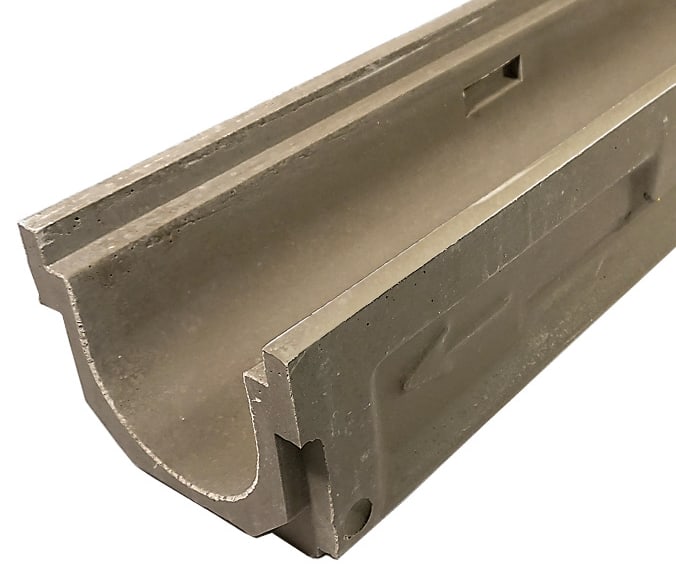What Is Polymer Concrete?
If you have ever mixed your own concrete for a household project (I’m not talking Sakrete), you will know that the formulation of concrete is 3 scoops of gravel, 2 scoops of sand and one scoop of Portland cement. In this formula, cement is the binder that is activated by water. If your gravel and sand have a proper distribution (that is, particle size distribution), and not too much water is added, you will make concrete that is easy to work with and will achieve a density of about 100 pounds per cubic foot. The concrete should be set in 1 – 5 hours, depending on the local conditions (temperature, wind, etc.).
Polymer Concrete is similar to regular concrete. Both have aggregate, sand and fine powder in the mixture. However, instead of water to blend all these components together, a polymer resin and hardener, such as MEPK, are added.
Material
Located in northeast Ohio, the Sharon Conglomerate (a geologic rock formation) crops out of the ground and is primarily made up of conglomerate and quartz arenite sandstone. It is mined and collected by a number of industrial mineral firms in the area. The Fairmont Minerals Best Silica Facility, located in Chardon, OH, is one such company.
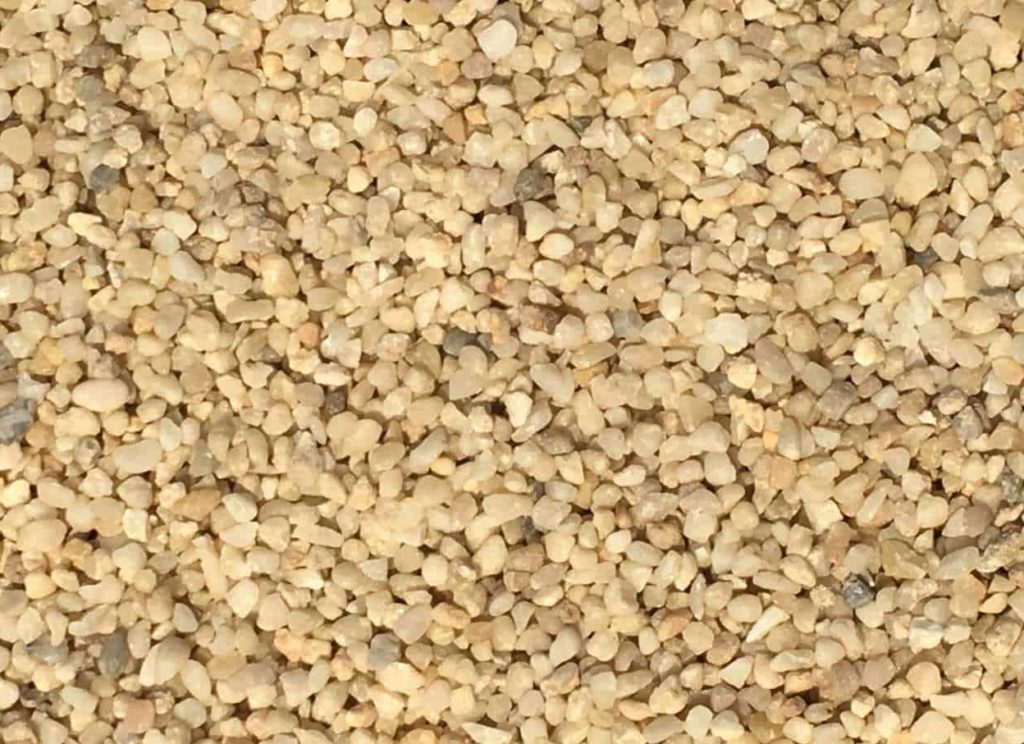
The silica in that part of the district has a low iron content, which in turn, reduces the amount of “binder” between the individual sand particles. As a result, the silica in this formation is very clean and rounded from being deposited by water and easily beneficiated (producing a higher-grade product). Fairmont Minerals Best Silica’s material is used for a number of industrial processes due to its high-grade purity.
In 1985, I was taking a tour of the area and learned from my guide about a new innovative company that built their first manufacturing facility neighboring the mine, named ACO, whose products were made from “polymer concrete” with local silica. At that time, I was a research engineer, designing high-temperature concretes for the molten metal industry. So, the binder system used in polymer concrete piqued my curiosity. I learned much later that I had a brush with my future while at Best Silica.
Many manufacturers have found different local aggregates to use in making their polymer concrete formulations depending on the application and availability of raw materials. Generally, the thickness of the part being produced determines the particle size distribution within the batch. For example, a 6 mesh top aggregate is used (3.36mm) for parts ½ inch in thickness or greater.
Hubbell, the largest polymer concrete manufacturer in the U.S., for instance, uses dolomitic limestone in their Tennessee facility to make their POLYCAST® polymer concrete trench drains. In another situation, I have seen Chinese polymer concrete channels that use recycled glass as an aggregate in their formulation.
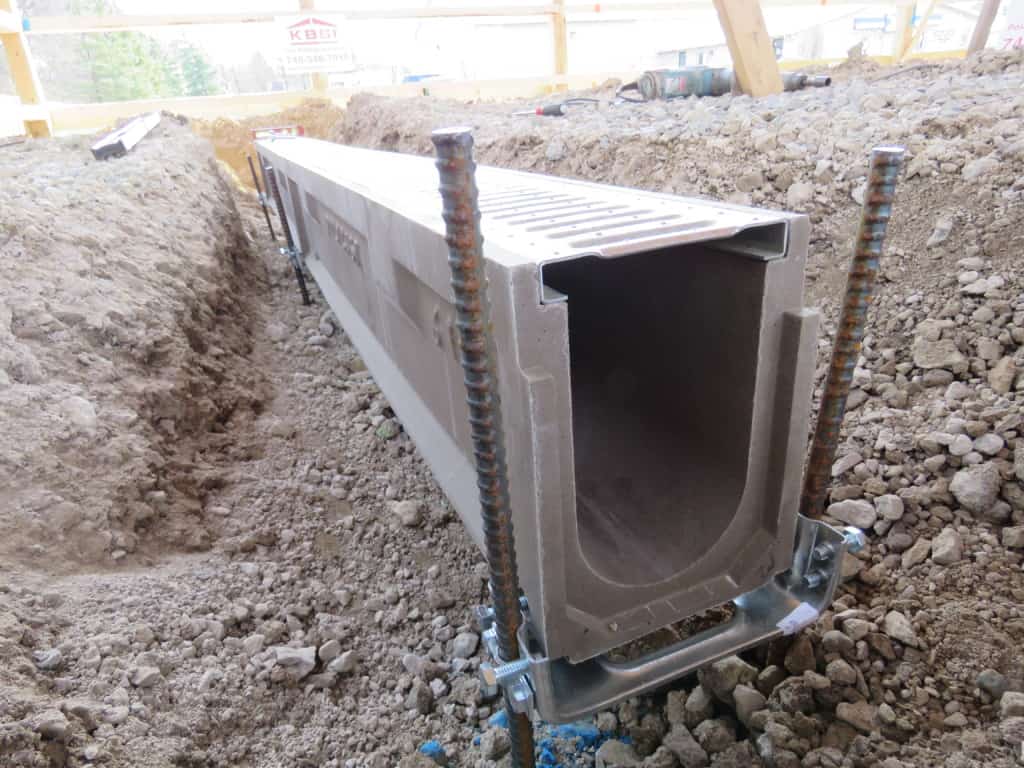
European Roots Of Polymer Concrete

Initially, polymer concrete as a material was a European concept and its early development can be traced to Italy after WWII. It spread to Germany soon after and was originally used to make feeding troughs for farm animals. A company called Hauraton, established in 1956, can be contributed to the international success of polymer concrete and is a founding company of modular trench drains. They continue to be a significant European brand to this day
Around 1975, several manufacturers (including ACO), based in Germany also began making modular trench drain channels using polymer concrete. Several years later, with an aggressive marketing strategy, they sought to introduce their product to the construction market in the United States, which up to that point had not been conceptualized.
Over the next few years, market acceptance for modular trench drains grew throughout North America and more competition arose. The first U.S.-made polymer concrete trench drain was developed in Fargo, ND by POLYCAST®. They elected to use imperial measurements, making these channels 4 feet in length. Later another European company, ABT, Inc. (PolyDrain) also started making channel drains, but in North Carolina, and began setting the standard that European-made channels were one meter in length. Technology and therefore products, out of Europe were designated to be metric-based. This division in units of measure is ever present in the trench drain market today. It is a main indication of the manufacturing and technology source.
A few companies can be attributed as the foundation for the modular polymer trench market in the U.S. and many had commonalities in the design of their products. Most manufacturers had 4” (100mm) internal width channels with polyester resin-based polymer concrete of equal quality. The channels were all pre-sloped to around 0.6% with recesses built into the top edge so that when installed, the grating would sit flush. And the top edge of the exposed channel was polymer concrete. It is here, at the top edge of the drain body, where ACO made product innovations to help differentiate itself in the market.
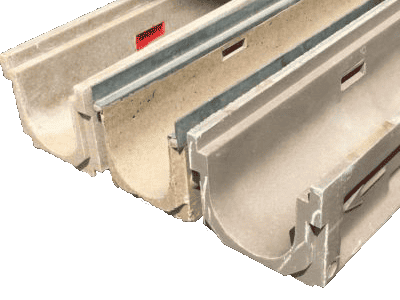
They realized that the exposed polymer concrete edge may be prone to chip under the right conditions or could deteriorate over time in areas prone to freeze-thaw. This resulted in the first trench drain, at least in the States, to have an “integral metal” edge on the channel. Aesthetically, the integral edge offers a clean, trim look that outperforms the exposed concrete edge. Both POLYCAST® and ABT, Inc. (PolyDrain) have remedied the aesthetics of their own channels by developing a metal overlay or edge protector that acts as a sheath to cover the channel edges.
Jumping On The Band Wagon
Over the next 20 years, polymer concrete trench drains gradually found acceptance in the U.S. marketplace, due to the rising skilled labor costs for the frame and grate systems requiring the contractor to build a wooden form.
In the early 1980s, big plumbing component manufacturers began taking notice of the linear drain marketplace. To this point, polymer concrete trench drains had been predominantly used in site work (outside projects). Plumbing construction hadn’t quite yet incorporated polymer concrete trench drain as a building material. Eventually, plumbing hardware companies such as Zurn, Watts, Josam, and J.R. Smith started aligning themselves with the polymer concrete trench drain manufacturers and began promoting modular drains in their markets. POLYCAST®, for example, manufactured trench drains for Watts and Zurn. ACO entered into a relationship with Jay. R. Smith and Josam began working with another European giant, MEA, which established the MEA-Josam product line.
The original three manufacturers (ACO, POLYCAST® and ABT, Inc. (PolyDrain)) had established the U.S.Trench drain market and invested in brick-and-mortar manufacturing facilities. The plumbing supply houses that originally jumped on the polymer concrete drain “bandwagon”, began to seek ways to manufacture their own trench drain channels without the overhead required by setting up a polymer concrete facility.
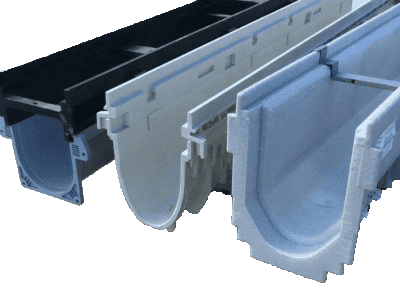
In the early 1990s, there began a gradual migration of the plumbing markets to move away from polymer concrete to plastic products. For instance, Zurn, which had previously bought and re-sold the POLYCAST® brand, moved away from polymer concrete to fiberglass (Z806) and then migrated to plastic channels (Z886). The manufacturing of channels from these materials was more cost-effective than the polymer concrete product lines.
Likewise, Watts and Jay R. Smith left their polymer concrete trench drain roots to develop channels based on polyethylene plastic. Josam relocated all their MEA polymer channels to Europe and Canada and began promoting a fiber-reinforced structural plastic. As a result of these shifts, the trench drain marketplace is experiencing PC (polymer concrete) channels for both exterior and interior projects and plastic channel drains are utilized in more interior commercial applications and many exterior residential designs.
One can argue that the future of trench drains will be with plastic drain products, due to the low cost of manufacturing materials, widespread availability and application versatility. For instance, plastic pre-sloped channels with plastic grating are generally installed at commercial pools or kennels. The fundamental makeup of some plastic (HDPE or Polypropylene) stands up well to most chemicals and is not sharp to the touch of bare feet (or paws). There is also the low pricing advantage of plastic components versus polymer concrete or metal. However, for interior processes with hot solutions such as breweries or distilleries, for example, polymer concrete channels with vinyl ester resin should be considered in the drain selection process due to the robustness of the channels.
It could also be debated that polymer concrete channels are better suited for exterior applications than plastic channels, due to their thermal expansion flexibility. Polymer concrete trench drains are similar in composition to standard Portland cement-based concrete that encases the channel allowing this type of system to “play” better with the surrounding concrete over plastic products.
On hot days, plastic channels could expand and separate from the concrete that they are encased within. Colder days could see plastic channels shrinking more than the surrounding concrete, which can cause cracks within the trough from stress. This problem has plagued the plastic channel industry from the beginning and is amplified by longer drains and extreme swings in temperature.
Trench Drain Systems is one of the largest distributors in the United States who are committed to providing you with quick solutions to all your surface water runoff problems. Our professional staff can assess your project requirements and quickly offer you competitive pricing and information regarding the products you need. Contact us for a free quote or for further information on drainage solutions visit TrenchDrain.com or DrainageKits.com
Email: Shop@TrenchDrain.com
Phone: 610-882-3630

